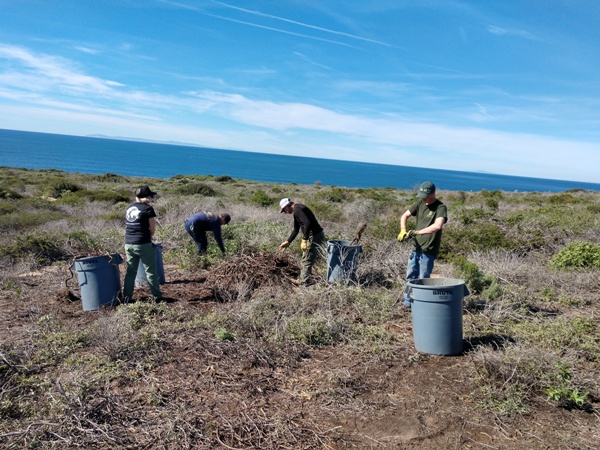Furloughed Scientists Volunteer for CNLM
On January 22, 2019, a group of furloughed USGS (United States Geological Survey) staff volunteered for the day at Center for Natural Lands Management’s (CNLM) Dana Point Preserve to help with ongoing habitat maintenance within the preserve. Their hard work clearing dead and downed woody debris and duff from the preserve helps create open sandy areas in which the federally endangered Pacific pocket mouse (Perognathus longimembris pacificus) like to forage. Clearing space also opens the canopy, allowing native shrubs such as California croton (Croton californicus), a Pacific pocket mouse preferred food source, to germinate in recently open sand. The Pacific pocket mouse was thought to be extinct before it was rediscovered on the CNLM Dana Point Preserve in 1993. To date, the only other location where the Pacific pocket mouse has been found since then is within three different geographic areas on Marine Corps Base Camp Pendleton. These same USGS staff are highly involved in monitoring the endangered mouse in those other locations. In addition to creating habitat, the furloughed USGS staff helped place the removed woody debris along the coastal bluff edge to act as a check dam in gullies and rills to reduce erosion from rain along the steep bluffs of the preserve. Commented CNLM Preserve Manager, Korie Merrill, who organized the event in response to the USGS offer: “With the aid of USGS volunteers, we were able to create open sandy patches in over 6,500 square feet of the preserve. The continued collaboration with USGS is invaluable in the protection and persistence of the Pacific pocket mouse at the Dana Point Preserve. We will continue to clear sections of dead vegetation in 2019 as part of our habitat management and the help by USGS volunteers has increased the total area we will be able to clear this year.”
Figure. Volunteers help CNLM Ranger Tracey Rice clear dead and downed woody debris.


